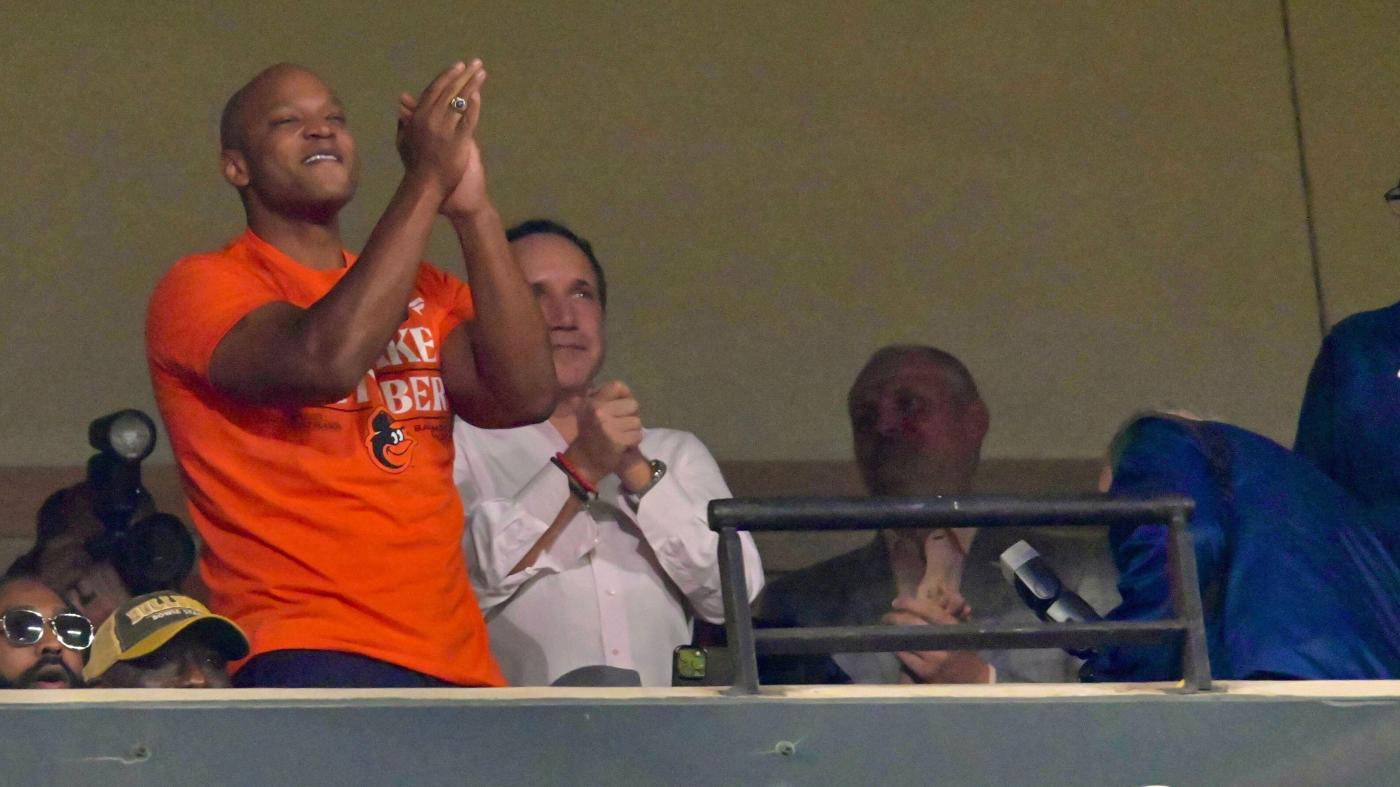
Former MSA Chair Thomas Kelso: A flock of unanswered questions in Orioles deal | READER COMMENTARY
In response to Hayes Gardner’s excellent article, “‘Essentially gifting the land’: Economists pan land deal with Orioles; state says it will ‘reinvigorate’ Camden Yards” (Oct. 27), there are still many unanswered questions about the development agreement included in the memorandum of understanding between Gov. Wes Moore and Orioles Chairman and CEO John Angelos. These include:
Is the state receiving adequate value for this agreement? Under the MOU, the state will lease the property to Angelos for 99 years and receive $94 million in rent over that time. Based on a present value analysis of the rents to be received over the term of the lease, $94 million is worth somewhere between $13 million and $20 million in today’s dollars. So how much are the state-owned properties included in the development agreement worth?
Without a procurement process whereby the Maryland Stadium Authority would solicit proposals from qualified developers and without an actual bid competition to see what the highest value is, there is no exact answer. However, in anticipation that the MSA and Orioles may want to look at developing these properties, the MSA engaged Cushman & Wakefield for planning purposes to estimate the value. I encourage MSA to release this report to the public.
The second question arises because under the proposed terms, the Orioles will have up to 10 years to begin construction. Who manages the property in the interim, and who collects rents from existing tenants and who bears responsibility for maintaining the property during this period? Currently, the MSA receives more than $3 million annually in rents but, under the development agreement, it will receive $1.5 million in rents from the Orioles for the first five years and $500,000 in rents for the next five years. Isn’t the state losing money?
The third question derives from the fact that, in 2021, the MSA invested significant dollars to upgrade aging infrastructure in the warehouse and to freshen all the common areas. There is approximately $30 million of debt still outstanding for that work, and the MSA pays more than $3 million per year in debt service. Will the Orioles assume responsibility for this debt service, or will the MSA still have this responsibility? Where will the funds to service the debt come from?
The fourth question is: Why would the Orioles be selected as the developer of this property when they have no prior development experience? The MSA is the only developer who has ever worked on the Camden Yards complex and successfully developed Orioles Park, M&T Bank Stadium and the warehouse. The concept of “live, work, play” was originally advanced by the MSA all the way back to 2017. Why would the MSA not be the developer or a partner in the development for the property it owns?
The fifth question is why would the state agree to allow the Orioles to have a 30-year lease for the stadium but a 99-year lease for the developable properties? Under this scenario, the team could change owners while Angelos keeps the development rights. Because there is no cross-default provision between the stadium use agreement and the development agreement, the state will tie up the developable properties for 99 years, receive only a base rent and receive none of the upside while it retains all of the downside risk. To develop the properties, the Orioles will need to secure financing, and its lender will want the state to subordinate its rights to collect even the paltry rent unless the debt payments are made. If the development fails, the Orioles walk away with no risk and the state will inherit a failed development with debt still outstanding.
My last question is: Why isn’t the state seeking competing bids from actual developers, as is typically required under Maryland law? The last time the state tried to pick a favored developer without real competition it didn’t turn out well. The State Center project was halted by a lawsuit that accused the state of violating its own laws in selecting a developer without competition. Ironically, the plaintiff in the suit was Peter Angelos. There are numerous developers both locally and nationally with real experience in developing sports-related properties.
In the statement from Kerry Watson, the Orioles’ executive vice president of public affairs, he talks about benefits to Maryland from the collection of sales tax, jobs that number in the thousands and community opportunities. David Turner, Gov. Moore’s communications director, cited the economic impact of entertainment districts around Major League Baseball stadiums in Atlanta, St. Louis, Colorado and Texas. He mentions tax revenues, too. Wouldn’t it be fair for policymakers and citizens to see these projections so we can weigh the likelihood these benefits are achievable?
In summary, I ask that the Cushman & Wakefield report and projections for tax revenues and other benefits to be derived by the state be shared with policymakers and the public. I also ask that Governor Moore explain why competing bids were not solicited and how the citizens of Maryland can be assured that they are receiving fair value for assets owned by the state that would be under private control for 99 years. More sunlight is a good thing.
— Thomas Kelso, Phoenix
The writer served as chairman of the Maryland Stadium Authority from 2015 to 2023.
Add your voice: Respond to this piece or other Sun content by submitting your own letter.
()


